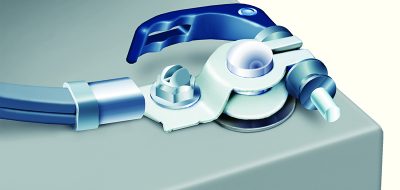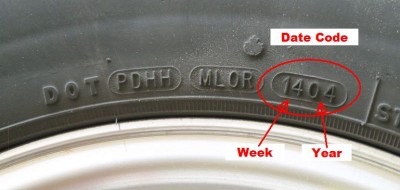No Battery Charging
 During a trip from Canada to Myrtle Beach, South Carolina, I drove to the Flying J Travel Plaza in Carlisle, Pennsylvania, for an overnight stop. The temperature outside of the RV was minus-8 degrees Fahrenheit, and the furnace ran until midnight when the low-battery warning came on. I started the engine but the batteries did not come up at all. I used a 12-volt DC cheater from the dashboard socket to the TV socket, and with the engine running the batteries slowly came up. The next day, we stopped at a campsite and plugged in to 120-volt AC power. The inverter brought the batteries right up in no time.
During a trip from Canada to Myrtle Beach, South Carolina, I drove to the Flying J Travel Plaza in Carlisle, Pennsylvania, for an overnight stop. The temperature outside of the RV was minus-8 degrees Fahrenheit, and the furnace ran until midnight when the low-battery warning came on. I started the engine but the batteries did not come up at all. I used a 12-volt DC cheater from the dashboard socket to the TV socket, and with the engine running the batteries slowly came up. The next day, we stopped at a campsite and plugged in to 120-volt AC power. The inverter brought the batteries right up in no time.
I made an appointment at Camping World in Myrtle Beach and told my story. They said that for $99 plus tax, they would find and fix the problem. The technician said that he couldn’t find the fuse, wiring, breaker, relay or anything related to my problem. He suggested that I get in touch with a dealer, and I paid him the $105 bill he presented. I have since learned that Peak Kodiak is out of business, so I can’t get a schematic diagram or anything related to wiring at all. The owner’s handbook that came with the RV had only general information and contains no wiring information other than to note that such a charging circuit exists.
If you can help in any way, I will be very grateful.
Alf Nurse
Mallorytown, Ontario
Bob: The reason the technician could not find the wiring, fuse, etc., is because it’s probably not there—or at least not hooked up. Your house batteries are not being charged by the engine alternator, which is not good, especially since you dry camp. Rather than tear your hair out looking for the wiring or chasing down a schematic, I would simply install a new charge line to the batteries.
Run a wire from the positive terminal of the starting battery to a 50-amp circuit breaker to the house batteries. I suggest that you use 8-gauge wire as a minimum, and go to 6-gauge if the run is longer than 20 feet.
In order to prevent the starting battery from discharging, you’ll need to use a dual-battery solenoid or a solid-state dual-battery isolator. One of these devices is installed between the starting and house batteries, as close as possible to the starting battery.
Both of these devices isolate the starting battery when the engine is not running. The solenoid is a simple mechanical device that uses relay contacts that close when triggered by the ignition switch, putting all the batteries into parallel so they can be charged by the engine alternator. While it is the cheaper of the two devices, over time the relay contacts can deteriorate, creating voltage loss.
A solid-state isolator has no moving parts to deteriorate. It uses diodes, which prevent the starting battery from being discharged when the engine is not running.
I would run a dedicated negative terminal wire between the starting battery and the house batteries. That connection will ensure the best charge rate.


